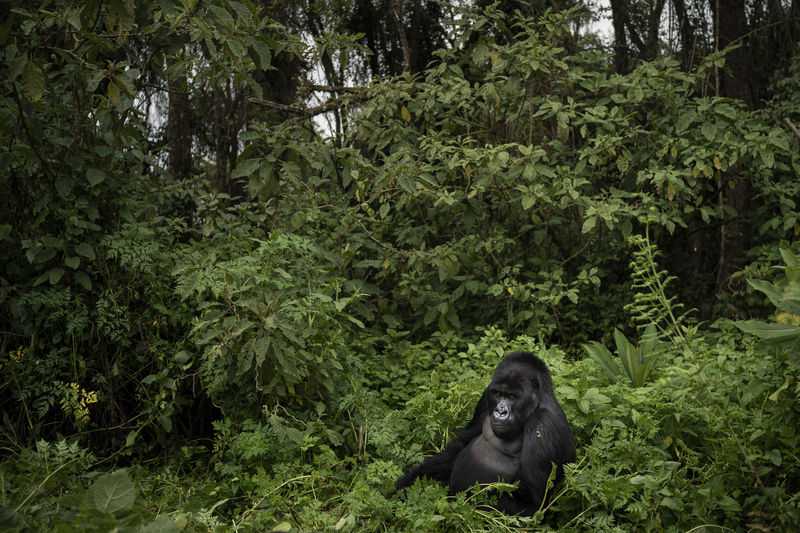Once-endangered mountain gorillas’ incredible comeback
18 December, 2019

Deep in the rainforest of Volcanoes National Park, a 23-year-old female gorilla named Kurudi feeds on a stand of wild celery. She bends the green stalks and, with long careful fingers, peels off the exterior skin to expose the succulent inside.
Biologist Jean Paul Hirwa notes her meal on his tablet computer as he peers out from behind a nearby stand of stinging nettles.
The large adult male sitting next to her, known as a silverback, looks at him quizzically. Hirwa makes a low hum — “ahh-mmm” — imitating the gorillas’ usual sound of reassurance.
“I’m here,” Hirwa is trying to say. “It’s OK. No reason to worry.”
Hirwa and the two great apes are all part of the world’s longest-running gorilla study — a project begun in 1967 by famed American primatologist Dian Fossey.
Yet Fossey herself, who died in 1985, would likely be surprised any mountain gorillas are still left to study. Alarmed by rising rates of poaching and deforestation in central Africa, she predicted the species could go extinct by 2000.
Instead, a concerted and sustained conservation campaign has averted the worst and given a second chance to these great apes, which share about 98% of human DNA. Last fall, the Switzerland-based International Union for Conservation of Nature changed the status of mountain gorillas from “critically endangered” to “endangered,” an improved if still-fragile designation.
It wouldn’t have happened without an intervention some biologists call “extreme conservation,” which has entailed monitoring every single gorilla in the rainforest, periodically giving them veterinary care and funding forest protection by sending money into communities that might otherwise resent not being able to convert the woods into cropland.
Instead of disappearing, the number of mountain gorillas — a subspecies of eastern gorillas — has risen from 680 a decade ago to just over 1,000 today. Their population is split between two regions, including mist-covered defunct volcanoes within Congo, Uganda and Rwanda — one of Africa’s smallest and most densely populated countries.
“The population of mountain gorillas is still vulnerable,” says George Schaller, a renowned biologist and gorilla expert. “But their numbers are now growing, and that’s remarkable.”
Once depicted in legends and films like “King Kong” as fearsome beasts, gorillas are actually languid primates that eat only plants and insects, and live in fairly stable, extended family groups. Their strength and chest-thumping displays are generally reserved for contests between male rivals.
Every week, scientists like Hirwa, who works for the nonprofit conservation group the Dian Fossey Gorilla Fund, gather data as part of long-term behavioral research.
If they see any health problems in the gorillas, they inform the staff at Gorillas Doctors, a nongovernmental group whose veterinarians work in the forest. The vets monitor wounds and signs of respiratory infections, but intervene only sparingly.
Source: the-japan-news.com
